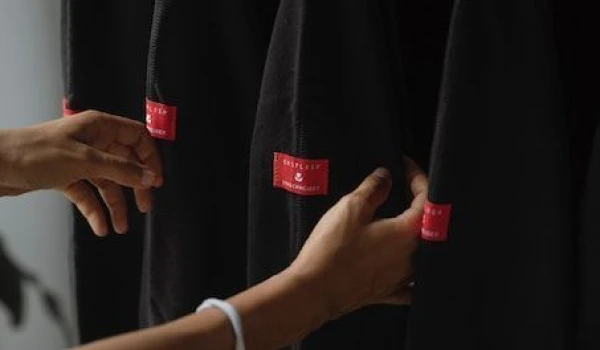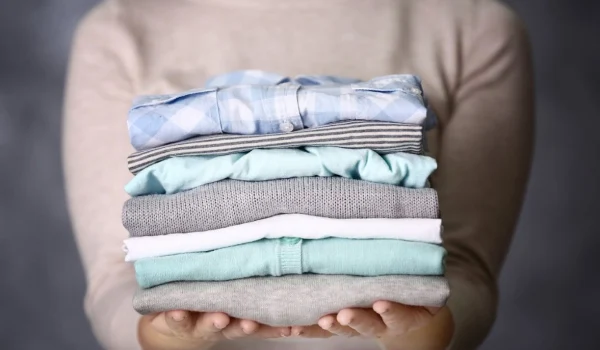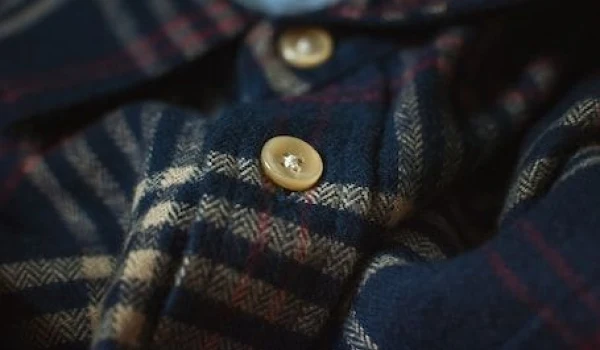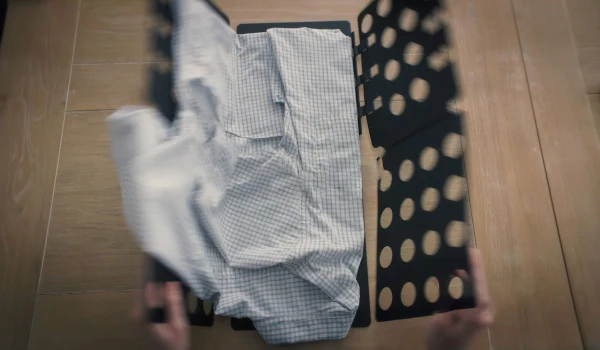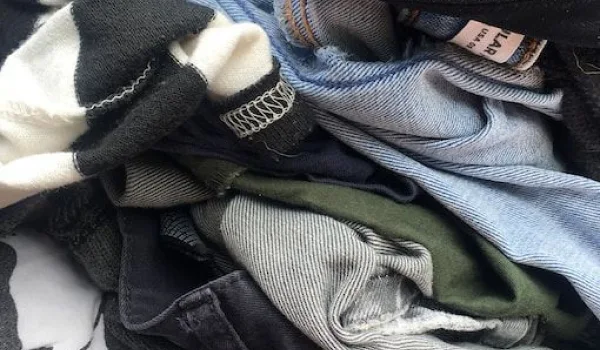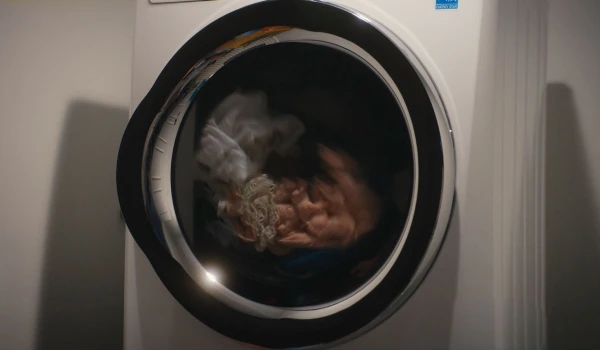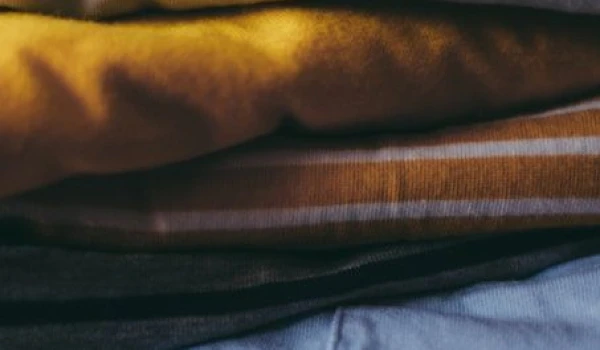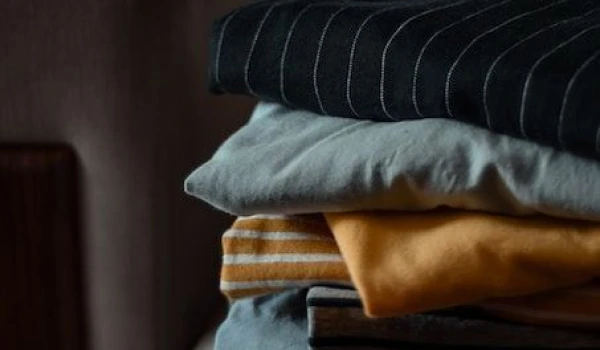Care
Clothing care tips to make your wardrobe last

The art of laundry is more intricate than most assume. But don't worry, with some expert guidance from Rinse, you can transform every washing day from a chore to a triumph!
Introduction
Laundry is more than just a mundane chore — it's a ritual that preserves the longevity of our clothes, ensuring they remain as vibrant and comfortable as the day they were purchased. Beyond aesthetics, regular washing is crucial for maintaining hygiene, removing accumulated dirt, bacteria, and the occasional coffee spill. A shirt, after all, isn’t merely a piece of fabric; it’s an investment, a cherished item, a memory. And with the right care, it can remain that way for years.
But how often have we stood in front of our washing machine, a bottle of laundry detergent in one hand and a delicate garment in the other, feeling utterly lost? Does this bra need a hand wash? Should the wool sweater go in cold water? And what on earth does that laundry symbol mean?
Mastering the art of laundry isn't just about keeping clothes clean. It's about understanding fabric types, knowing the difference between detergents and fabric softeners, and learning the nuances of your washer and dryer. It’s about making informed decisions that save time, reduce wrinkling, and avoid common pitfalls like dye bleeding or excessive wear.
Whether you’re a laundry novice or simply looking for time-saving tips, this guide is here to simplify your life. We'll demystify laundry symbols, offer insights on stain removal, and even provide a cheat sheet for tricky items like lingerie or hand-wash-only garments. Let's dive in, and make laundry less of a chore and more of a joy!
How to Do Laundry in 4 Simple Steps
1. Preparation and Sorting
Every successful laundry begins with proper preparation. Delicates, for instance, require a different approach compared to rugged outdoor clothing. Here's what you need to consider:
- Sorting Clothes: Before you throw everything into the washing machine, take a moment to sort. Separate whites from colored clothing to avoid dye transfer. Also, segregate based on fabric type —delicates like lingerie or woolens shouldn't be mixed with heavy garments.
- Reading Care Labels: Those tiny labels on your clothes aren't merely decorative. They provide essential information on how to wash, dry, and iron each garment. They might also contain important warnings, such as "Do not bleach" or "Cold water wash only".
- Choosing the Right Products: Not all detergents are made equal. Some are better suited for cold water washing, while others are ideal for tackling tough stains. Using a fabric softener can keep clothes soft, but it might not be suitable for all fabric types nor is it always necessary. Remember, the right detergent and fabric softener can make a world of difference.
- Pre-treating Stains: Accidents happen — be it a coffee spill or ink blot. Instead of waiting for laundry day, pre-treat the stain immediately using a stain remover. This will increase the chances of the stain being entirely removed during the wash.
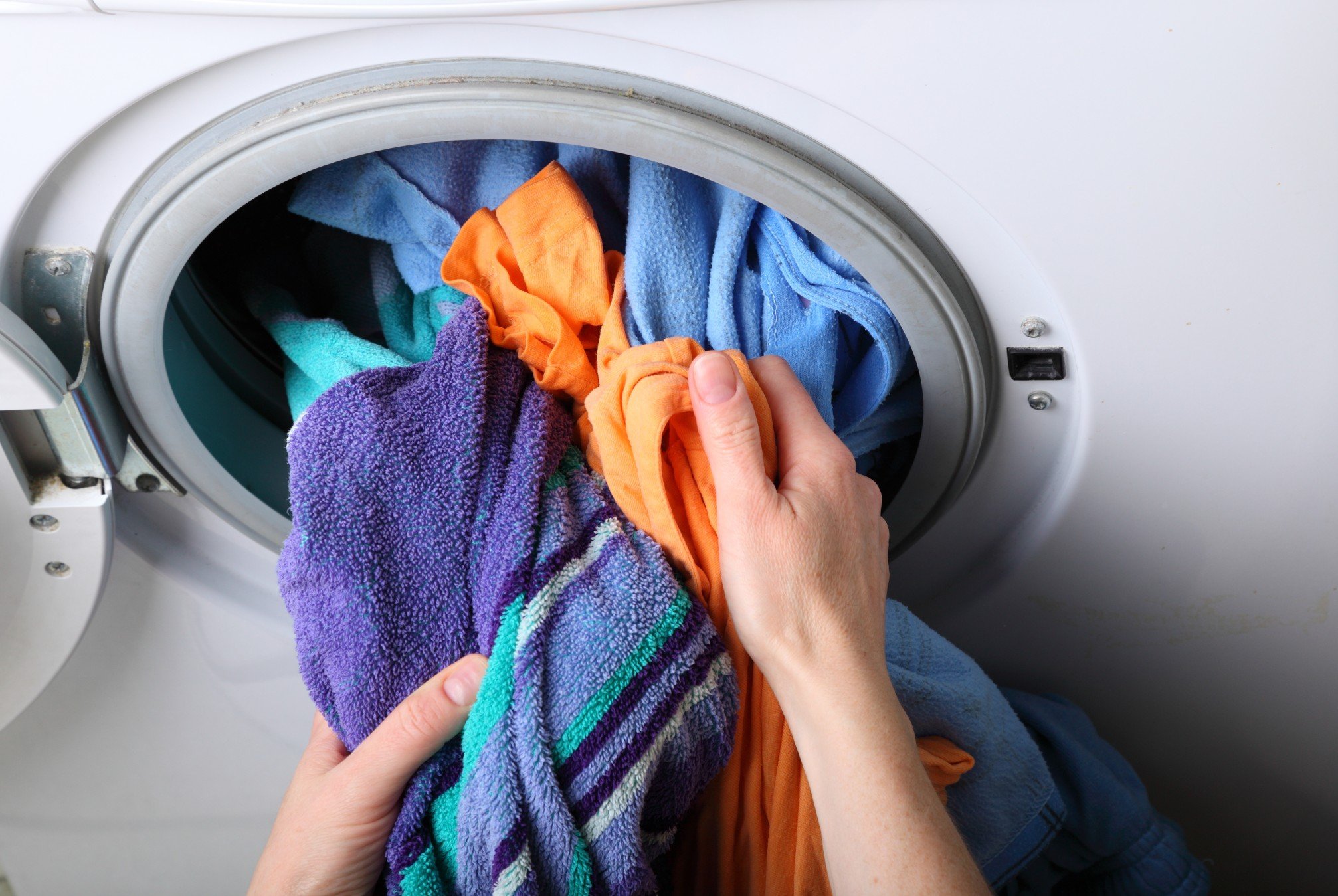
2. Washing and Rinsing
The actual act of washing your clothes is where the magic happens. However, proper washing is an art that requires understanding and precision.
Considerations for a Flawless Wash:
- Hand Washing vs. Machine Washing: Delicate items such as lingerie, woolens, and certain fabrics are better off being hand-washed. This gentle approach protects the clothing from the rigorous agitation of a washing machine, reducing the risk of damage and maintaining their integrity. On the other hand, regular clothes can benefit from the efficiency of machine washing.
- Cycles and Settings: Modern washing machines come with a myriad of settings designed to cater to different laundry needs. From delicates to heavy-duty, always ensure you select the right cycle for the garment type. Remember, using the delicate cycle for delicates, such as bras or mesh bags filled with underwear, can prevent wrinkling and extend the life of your items.
- Temperature Matters: Always pay attention to the care labels on your clothes. While hot water is effective for sanitizing and removing tough stains, it can lead to shrinkage, dye bleeding, and even increased wear and tear. Conversely, cold water is gentler, suitable for delicate fabrics, and less likely to cause dye bleeding.
- Washing Machine Load Capacity: Avoid overloading your machine. Not only can this strain the washer, but the clothes also won't get cleaned properly. Conversely, under-loading can be a waste of water and energy. Striking the right balance ensures efficient washing and reduces wear on the machine.
- Detergents and Additives: Choosing the right detergent is crucial. For regular laundry, a good-quality detergent is sufficient. However, for tougher stains, consider pre-treating as discussed above. Also, remember to use bleach judiciously, as excessive use can weaken fabrics.
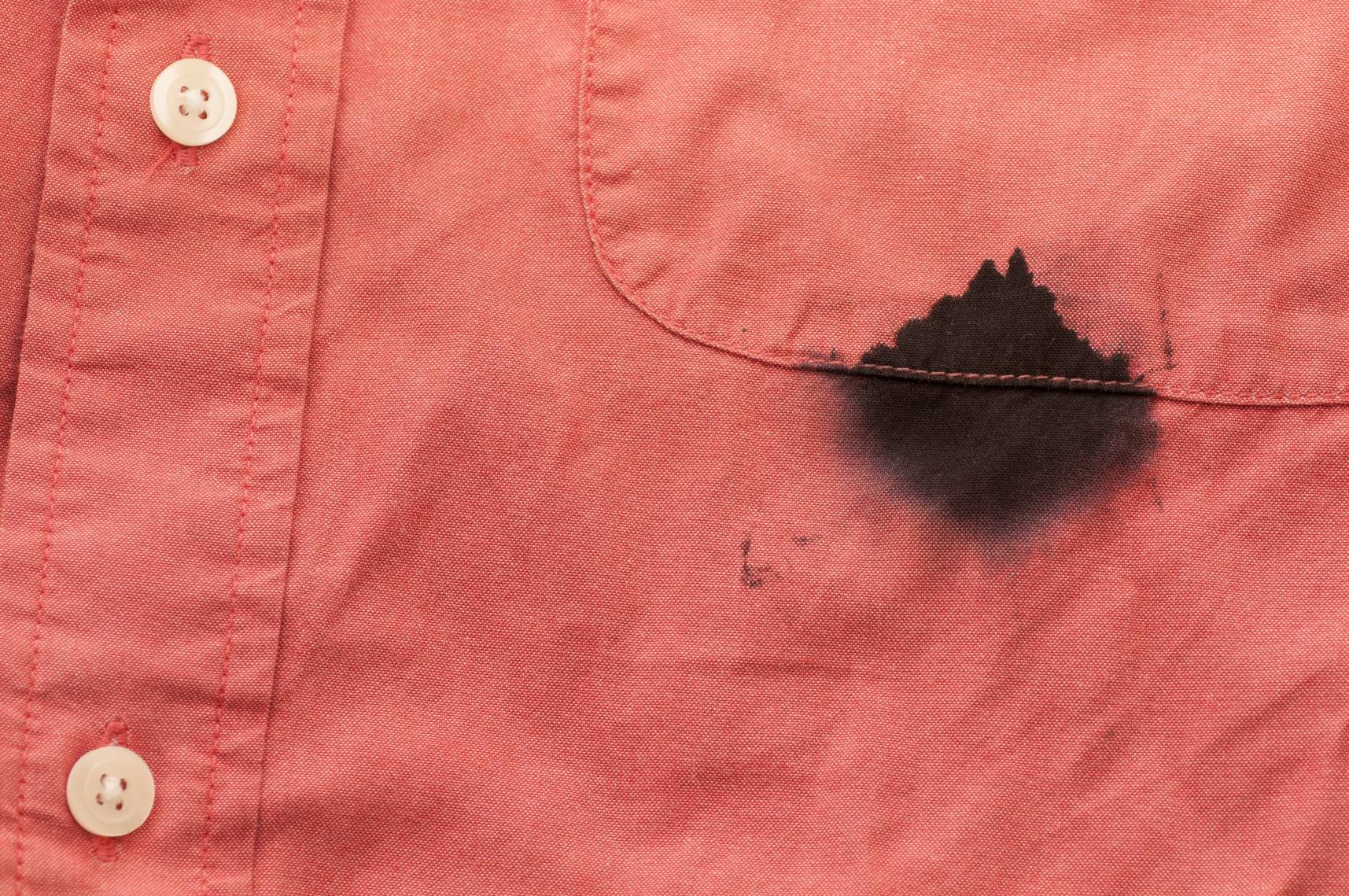
3. Drying
Once your clothes have been thoroughly washed, the next crucial step is drying. Surprisingly, the drying process can greatly influence the longevity and appearance of your garments. While washing clothes is about removing dirt and stains, drying is all about preserving the fabric’s integrity and ensuring it remains wrinkle-free.
Drying Considerations for Optimal Care:
- Air Drying vs. Machine Drying: Not all garments are made for the rigorous tumbling of a dryer. Delicate items, bras, and certain fabrics benefit from air drying, preventing them from shrinking or getting damaged. On the other hand, towels and heavier clothing might need the efficiency of a machine dryer to get them completely dry without becoming stiff.
- Understanding Dryer Cycles: Just as washing machines have different cycles, so do dryers. From 'Delicates' to 'Heavy-Duty', ensure you match the dryer cycle with the type of clothing. For instance, underwear might need a gentler cycle compared to thick bed linens.
- Dryer Sheets vs. Dryer Balls: While dryer sheets impart a fresh scent and reduce static, they can also leave a residue on your clothing, affecting their absorbency. An eco-friendly alternative is wool dryer balls. They decrease drying time, are reusable, and if you want a pleasant scent, you can add a few drops of essential oil to them.
- Lint and Fabric Care: Always clear the lint trap after each dryer cycle. Lint accumulation can reduce the efficiency of your dryer and can be a fire hazard. Also, regular removal ensures your clothes remain lint-free.
- Ironing Post-Drying: To avoid excessive wrinkling, especially with shirts, dresses, or business attire, consider ironing them when they're slightly damp. This makes it easier to smooth out creases and ensures your clothing looks its best.
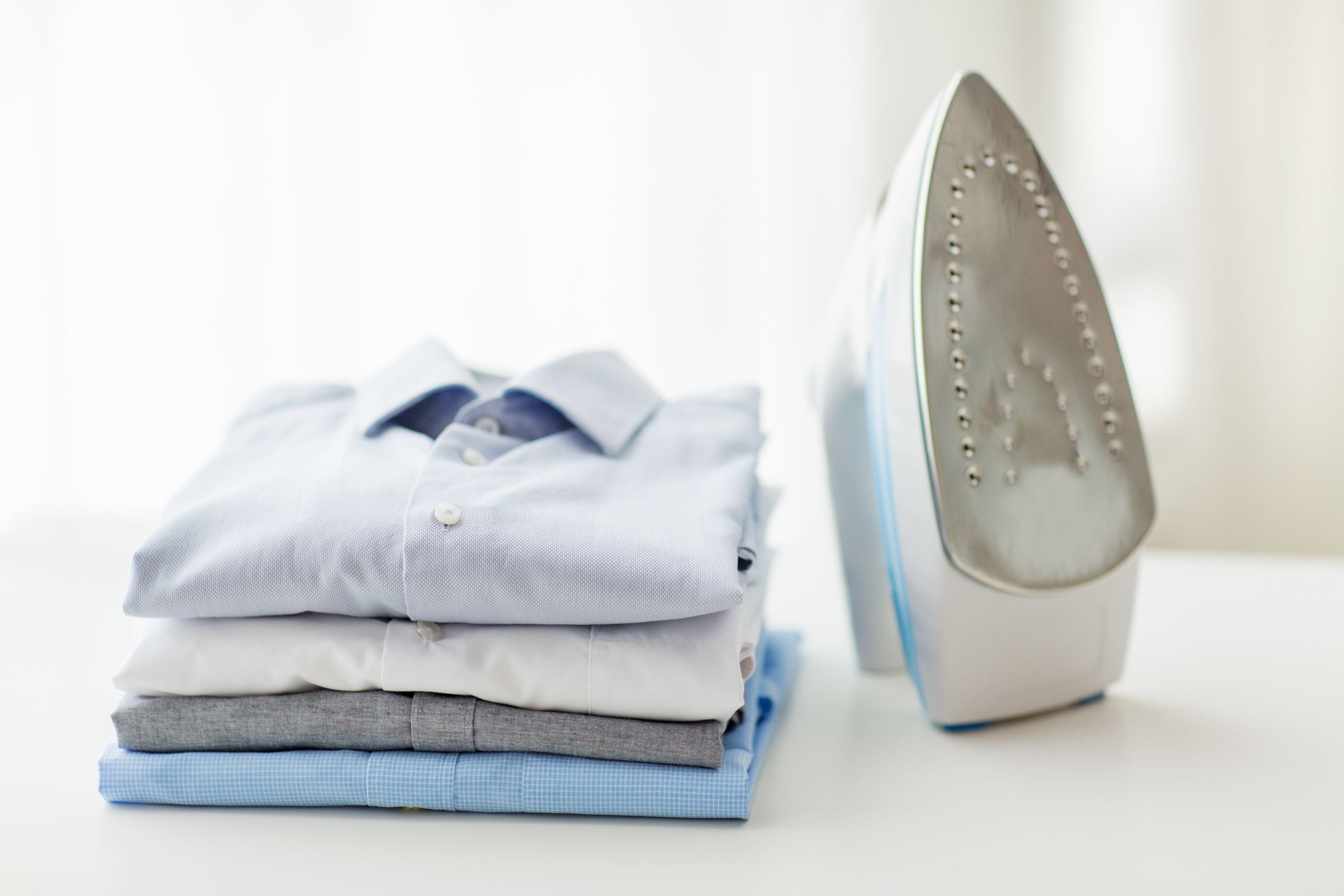
4. Folding, Hanging, and Storing
After washing, rinsing, and drying, the final step in your laundry journey is ensuring your clothes are stored properly. Proper storage not only ensures your garments are ready to wear but also extends their longevity by preventing wear or fabric strain.
Guidelines for Pristine Wardrobe Management:
- Ironing vs. Steaming: Wrinkled clothes can make an otherwise sharp outfit look unkempt. While ironing is effective for a crisp finish, particularly for dress shirts and pants, steaming is gentler and works wonders for delicate fabrics, dresses, and even hand-wash items. Remember to check the care label: some garments, especially those that air dry, might specify if they're suitable for ironing or steaming.
- Folding vs. Hanging: Not all clothes are meant to be hung. T-shirts, jeans, and knitwear benefit from folding as hanging can distort their shape. Inversely, dress shirts, blouses, dresses, and pants should be hung to avoid wrinkles. Using the dryer sheet can also keep them smelling fresh for longer.
- Storing and Closet Organization: Once your clothes are either folded or hung, ensure they're stored systematically. Sort laundry by category, keeping all shirts, trousers, and dresses together. For items like bras, avoid folding them to maintain their shape. When putting away heavier items like towels, ensure they're completely dry to prevent mildew.
- Delicate Care: Items that have been hand-washed or are more delicate, such as lingerie or certain blouses, may benefit from mesh bags or separate drawers to prevent snagging or tangling.
- Spin Cycle's Role: Ensure clothes are not left in the washing machine long after the spin cycle finishes. Prompt removal prevents excessive wrinkling, making the folding and storing process smoother.
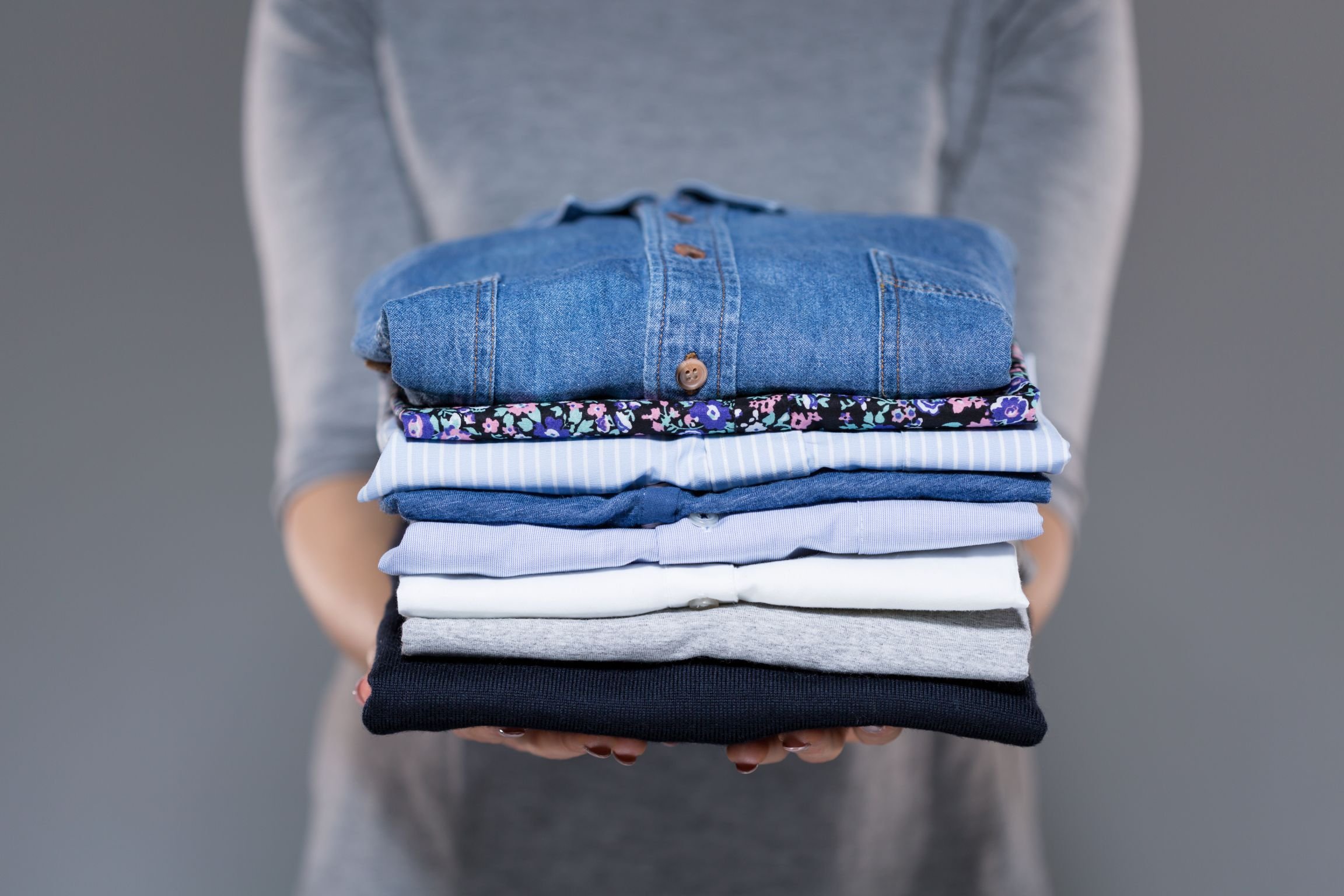
Common Laundry Mistakes to Avoid
Laundry might seem straightforward, but a simple oversight can lead to a fashion disaster. Nightmare scenarios like a pink shirt emerging from what was originally white or a favorite sweater turning two sizes smaller are more common than you think. Here are some mistakes to avoid:
- Overloading the Washing Machine: We've all been tempted to cram as many clothes into the washer as possible, hoping to save time. However, this can result in clothes not getting washed properly, leading to lingering stains and detergent residue. Additionally, overloading can strain the washing machine. The solution: Always follow the manufacturer’s guidelines on load size. Ensure clothes have enough space to move freely, ensuring an even wash.
- Mixing Colors Carelessly: Washing colored and white clothes together can lead to color bleeding. The solution: Sort laundry based on colors. Wash whites, darks, and colors separately to maintain their original shades.
- Ignoring Fabric Care Labels: These tiny labels on your clothing aren’t just for show. They provide vital information on how to properly wash, dry, and iron each garment. The solution: Always read and follow these instructions. If a label says “hand wash” or “dry clean only”, it’s for a good reason.
- Doubling Down on Detergent: More detergent doesn't necessarily mean cleaner clothes. Using too much can leave a residue on your garments, making them feel stiff and potentially causing skin irritations. The solution: Use the recommended detergent amount and ensure you're using the right type for your washer.
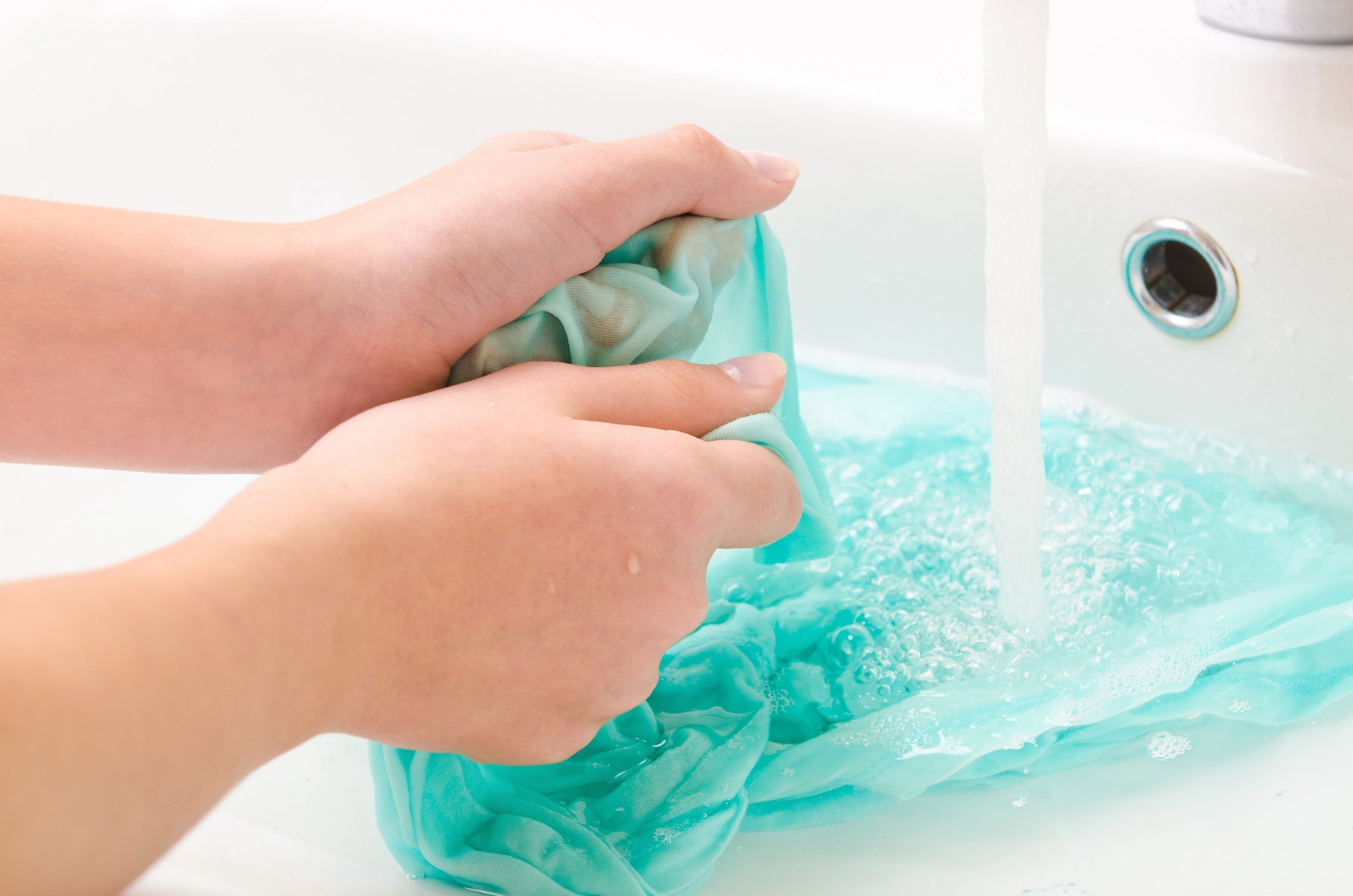
When it comes to delicate fabrics, special items, or the intricacies of hand washing particular garments, sometimes it's best to seek expert help. That's precisely where Rinse’s esteemed laundry services make all the difference. By letting seasoned professionals handle your attire, from those you wash often to the pieces requiring careful hand washing, you can sidestep laundry mishaps and free up hours in your schedule.
Schedule a pickup today and bid farewell to those bothersome wrinkled tops, color-drained trousers, and the relentless task of hand washing. At Rinse, each article of clothing receives meticulous attention, promising you'll always make a polished appearance.

Introduction
Does the musty and mildew-ridden smell of towels make you sick? You're on the same page as us.
Many people believe the only way to get rid of this smell is to throw out the towel itself. While that's the last resort scenario, it doesn't have to be your first plan of action.
Are you wondering how to get the mildew stench out of towels and avoid having to buy new towels every other month? Better yet, how do you avoid getting the towels smelly in the first place?
Here's Why Towels Might Get Smelly
You take the towels out of the dryer, and they smell stinky. It almost seems like a mystery why towels would end up with a mildew or musty smell.
We went Sherlock Holmes on this issue and found the following reasons for foul-smelling towels:
-
Improper Drying: We've all made the rookie error of leaving towels in the washer or dryer overnight. "I'll take them out in the morning," is what we say, all cozied up in our beds. But what happens is the towels absorb the moisture and create a breeding ground for bacteria.
-
Humidity and Warmth: Even if you take the towels out immediately, improper storage can result in a musty smell. You want to avoid putting the towels in a poorly ventilated area. The ideal location gets a good amount of air circulation.
-
Overcrowding: How wonderful would it be if we all had huge closets with plenty of circulation and space? Unfortunately, this is not a luxury many of us have. As a result, we tend to cram as many towels as possible in one space, which can cause them to retain moisture and pick up odors.
-
Hard Water Deposits: Sometimes, the issue is not your washing regimen but the water itself. Hard water contains elevated levels of magnesium and calcium, which can leave deposits on the towel fibers. The resulting smell can be very unpleasant.
-
Only Using Detergent: We're not denying the efficacy of a detergent in cleaning the towels. But it's not always enough. Often, adding a dash of vinegar with a few drops of a scented essential oil can do wonders for your towels.

How to Get Mildew and Musty Smells Out of Towels
Now that we've addressed the root causes, let's discuss how to get a musty smell out of towels. For this method, you'll need the following materials:
-
White vinegar
-
Essential oils (optional)
-
Baking soda
-
Detergent
Now, follow these steps to get your towels smell-free:
Step 1: Run One Cycle With Vinegar
Place the towels in the washing machine and run a cycle using white vinegar instead of detergent. Due to its acidic nature, vinegar helps remove mildew or bacteria that may have accumulated on the fabric.
Most washing machines have a compartment for fabric softener. That's where you should put the white vinegar.
If your washer doesn't have this compartment, there's no need to worry. Put the towels in the washer tub and let it fill up with warm water. Then, add a cup of white vinegar to the wash cycle.
Step 2: Run a Second Cycle with Detergent or Baking Soda
For the second cycle, fill the detergent compartment with your regular detergent. If you have a preferred essential oil scent, such as lavender or citrus, add a few drops to the detergent.
Alternatively, you can add half a cup of baking soda to the washer tub and let the cycle finish with warm water. Baking soda is a deodorizer, which means it removes odors from fabric.
Step 3: Dry Them Properly
As already mentioned, proper drying is key to keeping musty odors away.
Now it's time for the towels to go to the dryer. Tumble dry the towels on low heat and run the dryer until they are fully dry.
The second method you can opt for is line drying. It's an eco-friendly way to dry your towels, and it helps keep them smelling fresh. Place the towels outside on a line or balcony rail, and let them air dry in the sun. Make sure to turn them over after a while to ensure even drying.
There you have it! Fresh and pleasant-smelling towels.
Step 4: Store the Towels
Proper towel storage is of utmost importance. If you get this part right, you won't have to deal with stinky scents.
Remember, do not put the towel in the storage closet immediately out of the washer. Dry them first.
Second, do not put too many towels in the closet. Storing too many damp towels together is an open invitation to mildew.
Third, clean the closet before storing the towels. Sometimes, the smell can arise from insect droppings or dust in the cupboard rather than mildew.
Last but not least, if your towels have visible signs of mold, don't try to salvage them. Keeping and using these towels is a health hazard. Discard them right away.

Preventive Tips to Avoid Bad Towel Smells
Taking a 3-step approach to washing your towels every time they have to go into the wash can be a bit tiring. Why not avoid smelly towels in the first place? Here are some tips to help you out with this issue:
-
Avoid Fabric Softener: We know you love the smell. But fabric softener has to go. It leaves a residue on the fabric that doesn't allow it to breathe, accumulating sweat, dirt, and mildew. The residue also accumulates moisture, which further increases mildew growth. You can use dryer sheets or dryer balls instead to get the towels to come out fluffy.
-
Dry Properly: After washing, hang the towels up immediately. Give them a good shake to get rid of excess water, and then hang them out in direct sunlight or around a heat source. Do not fold them while they're still wet, as this will trap moisture and increase the chances of mildew growth.
-
Wash Regularly: Ideally, you should wash your towels every week or after 5 to 6 uses. If you use terry towels, do not wash them with other clothes as they will snag or pull. Always follow the care instructions on the labels when it comes to washing towels.
-
Clean the Washer: Over time, washing machines can get filled with gunk and residue from detergents, fabric softeners, and other items. These can build up on your towels if you're not careful. Wipe your washing machine on the inner side with white vinegar on a microfiber cloth.
-
Use the Right Detergent: Low-quality detergents leave a sour smell on your towels. Stick to high-end detergents like Persil and Tide. They contain enzymes to remove stains and dirt from the material without making it stinky.

Keep Them Fresh!
No one wants moldy towels, and stinky towels certainly won't make you feel clean or refreshed. Now that you know how to get the unpleasant smell out of towels, we recommend following this multi-step routine regularly.
Alternatively, just avoid getting your towels stinky by drying them immediately after washing, using a heavy-duty laundry detergent, not overcrowding your linen closet, and airing your towels out in the sun every once in a while.
If that seems like too much work, you can always get help from a laundry service, such as Rinse. The best part about Rinse is that we come to you and pick up and deliver your laundry and dry cleaning– whether it's your favorite suit, athletic gear, or towels.
You can rest assured that your towels will come back smelling fresh and looking great.
Contact us at Rinse today to see our skill in action.

Have laundry or dry cleaning to do?
Rinse picks up, cleans and delivers 7 days a week. Amazingly awesome. Ridiculously simple.

Wave goodbye to stubborn stains on your best attire – dive into the fascinating world of dry cleaning and discover its hidden stain-fighting excellence!
Introduction
Dry cleaning – most people associate it with a cleaning method reserved for delicate garments or special fabrics. However, beneath this common notion lies a powerful stain-busting secret. Contrary to the misconception that dry cleaning is solely for "cleaning", it's a hero in the stain removal arena. If you've ever despaired over a persistent stain on your favorite silk blouse or cashmere sweater, dry cleaning might be your garment's savior. Let's debunk some myths and delve into the heart of dry cleaning.
Can Dry Cleaning Remove Stains?
At the core of dry cleaning are solvents, primarily perchloroethylene (often called 'perc' or 'PCE'). Unlike traditional washing with soap and water in a washing machine, dry cleaning employs these chemical solvents to dissolve and remove stains from clothing. This process ensures that garments, especially delicate ones like silk and cashmere, are cleaned without being exposed to water.
Why is this effective for stain removal? Water-based detergents might spread or deepen some stains, but the solvents in dry cleaning target grease, dye, and other stubborn marks more efficiently. Moreover, "spot cleaning" and "spotting" techniques are applied, where experts use additional chemicals and tools to treat specific areas before the actual dry cleaning process.
Furthermore, for those with environmental concerns, modern dry cleaners have begun using hydrocarbon solvents, a less toxic alternative to perc. Another popular solvent, tetrachloroethylene, offers similar stain-removing prowess.
Home dry cleaning kits have also emerged, offering a bridge between laundry and professional cleaning services. These kits usually include a solvent-based stain remover and a dryer-activated cloth, allowing a mild dry cleaning process in your home dryer. However, a professional dry cleaning service is advisable for stubborn stains or delicate fabrics like suede and wool.
5 Stains You Didn’t Know Dry Cleaning Can Remove
When maintaining our wardrobe, we often rely on the trusty washing machine or some dedicated hand washing for those precious delicates. However, some stains can be so stubborn that the usual laundry routine won't suffice. While many of us reserve dry cleaning for our high-end garments or those tagged "dry clean only", you'd be surprised at the variety of stains that can be effectively cleaned through professional dry cleaning. Beyond the convenience of home dry cleaning kits and the safety of placing garments in a mesh bag, the process dry cleaners use ensures that your clothes dry without the usual wear and tear and come out looking their best. From accidental spills to mystery marks, let’s dive into those surprising stains that dry cleaning can tackle effortlessly.
1. Fat, Grease, Oil-Based Stains
Oil-based stains can be particularly frustrating. Common sources include cooking oil splatters, motor oil from machinery, and even cosmetics. Some specific oil-based stains that dry cleaning can eradicate are:
- Salad dressings or food spills
- Lubricant or mechanical oils
- Sunscreen or lotions
- Make-up foundations
The solvent used in dry cleaning, such as perchloroethylene (perc) or hydrocarbon, is especially adept at breaking down these greasy residues, leaving clothes looking pristine.

2. Protein-Based Stains
Protein-based stains stem from organic sources and sometimes leave an unsightly mark or shadow. Examples include:
- Sweat or perspiration
- Blood
- Baby formula
- Eggs or dairy spills
Dry cleaning breaks down these protein structures through its unique chemical processes. The solvents, including "perc" or "PCE", target and lift away the offending stains without harming the fabric, making it especially effective for delicate clothes.

3. Tannin Stains
Tannins are plant-based compounds that often leave a colored residue on fabrics. Common culprits include:
- Red wine spills
- Tea or coffee drips
- Fruit juices
- Grass
Dry cleaning solvents uniquely neutralize tannins, ensuring these stains are lifted from the fabric. So, the next time you spill wine on your favorite blouse, remember a trip to the dry cleaner might save the day!
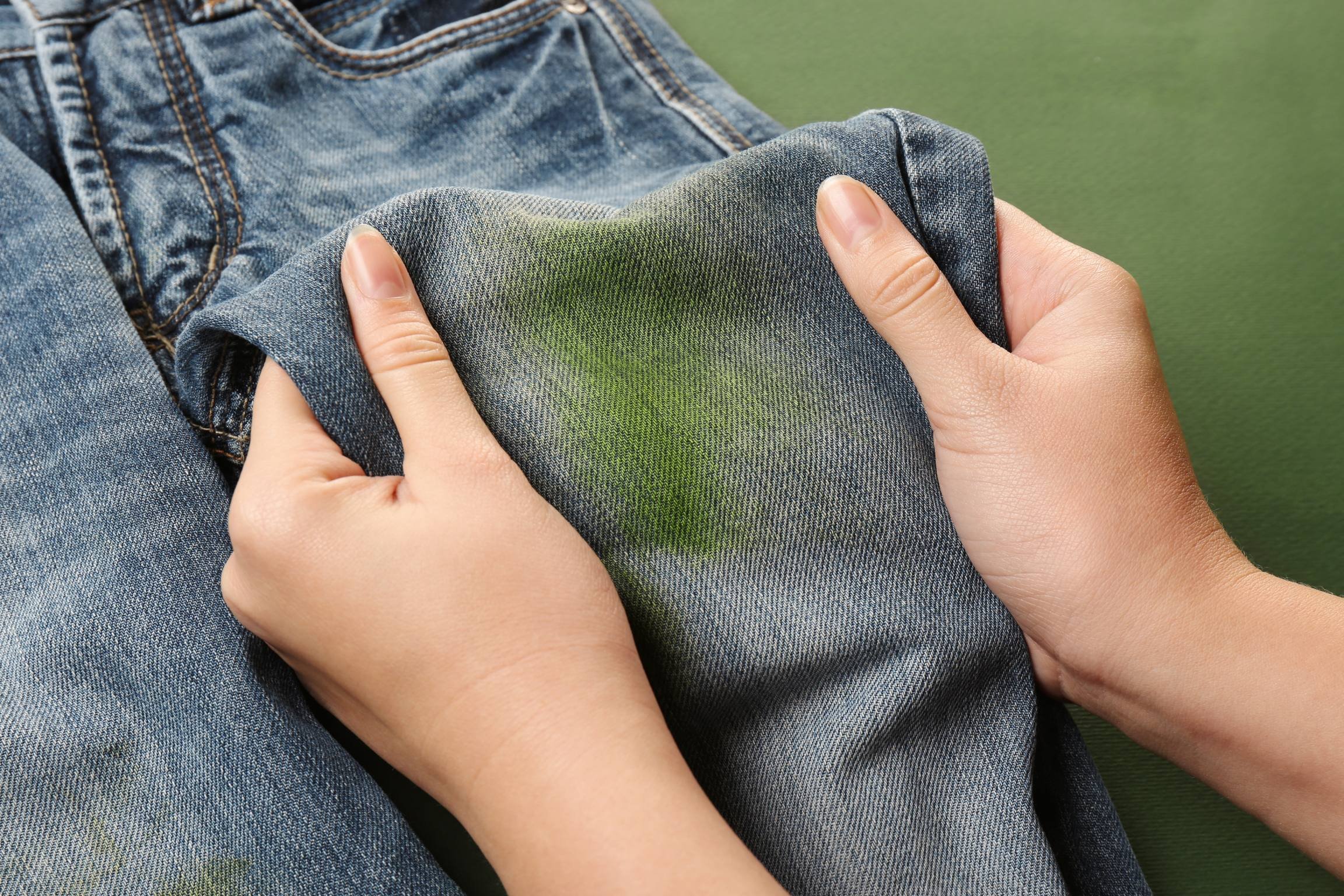
4. Dye Stains
Dye stains can result from color transfer between garments, especially in washing. They include:
- Color bleeding from clothing
- The ink from pens or markers
- Hair dye
Dry cleaning uses targeted solvents to remove these stains, often without affecting the garment's original color. The solvent-based cleaning process ensures colors stay vibrant while effectively addressing dye stains.
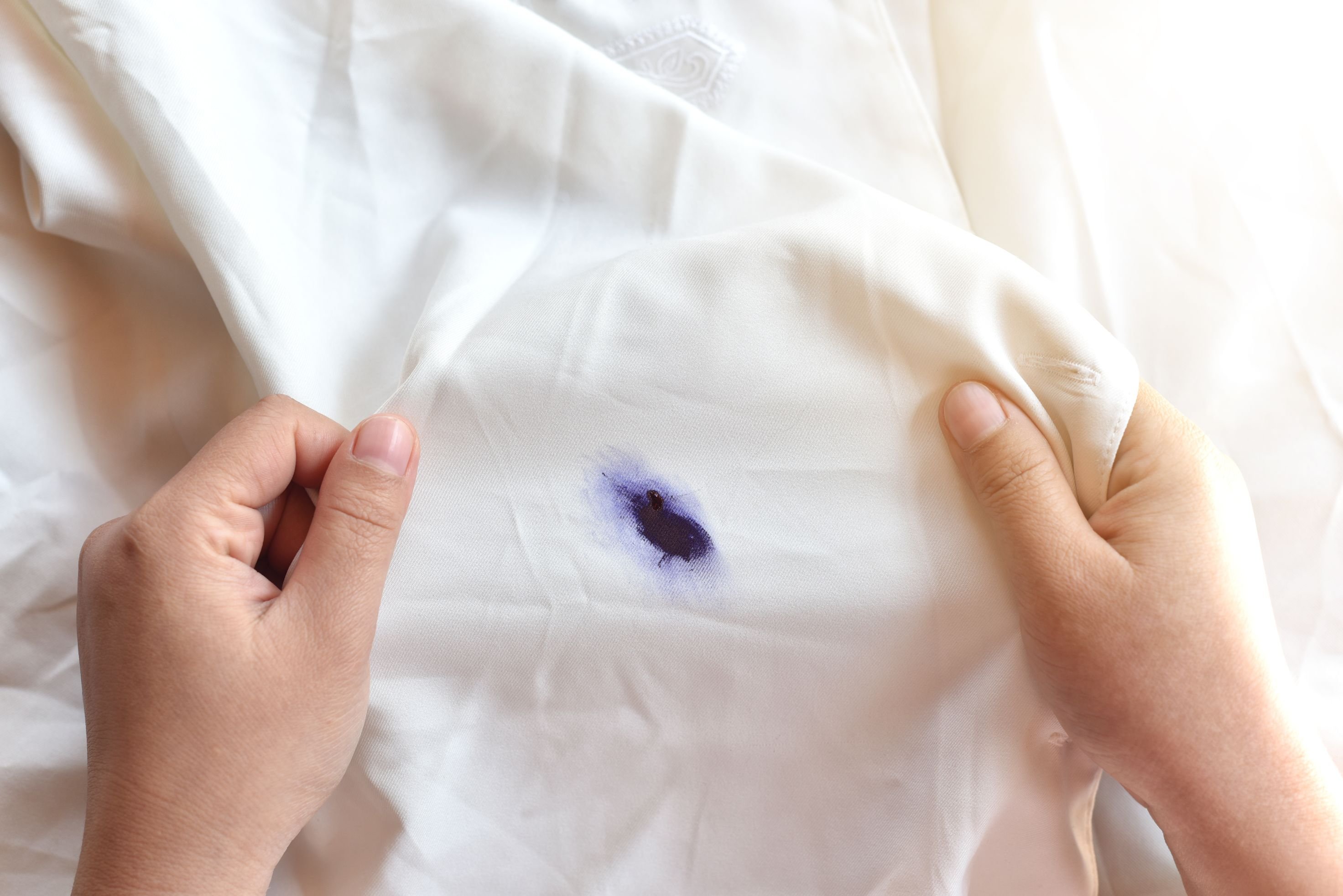
5. Other Stains
Dry cleaning is impressively versatile. It can tackle combination stains such as:
- Makeup (a blend of oil and dye)
- Butter (a mix of protein and oil)
- Sauces like ketchup or BBQ sauce have multiple stain-causing ingredients.
Giving your dry cleaner context about the stain's nature is crucial. This intel helps them use the appropriate solvent and stain remover to achieve the best results. Whether it's grime from everyday wear or a specific accident, trusting in the expertise of your dry cleaner and the science of the dry cleaning process can restore your clothing to its former glory.
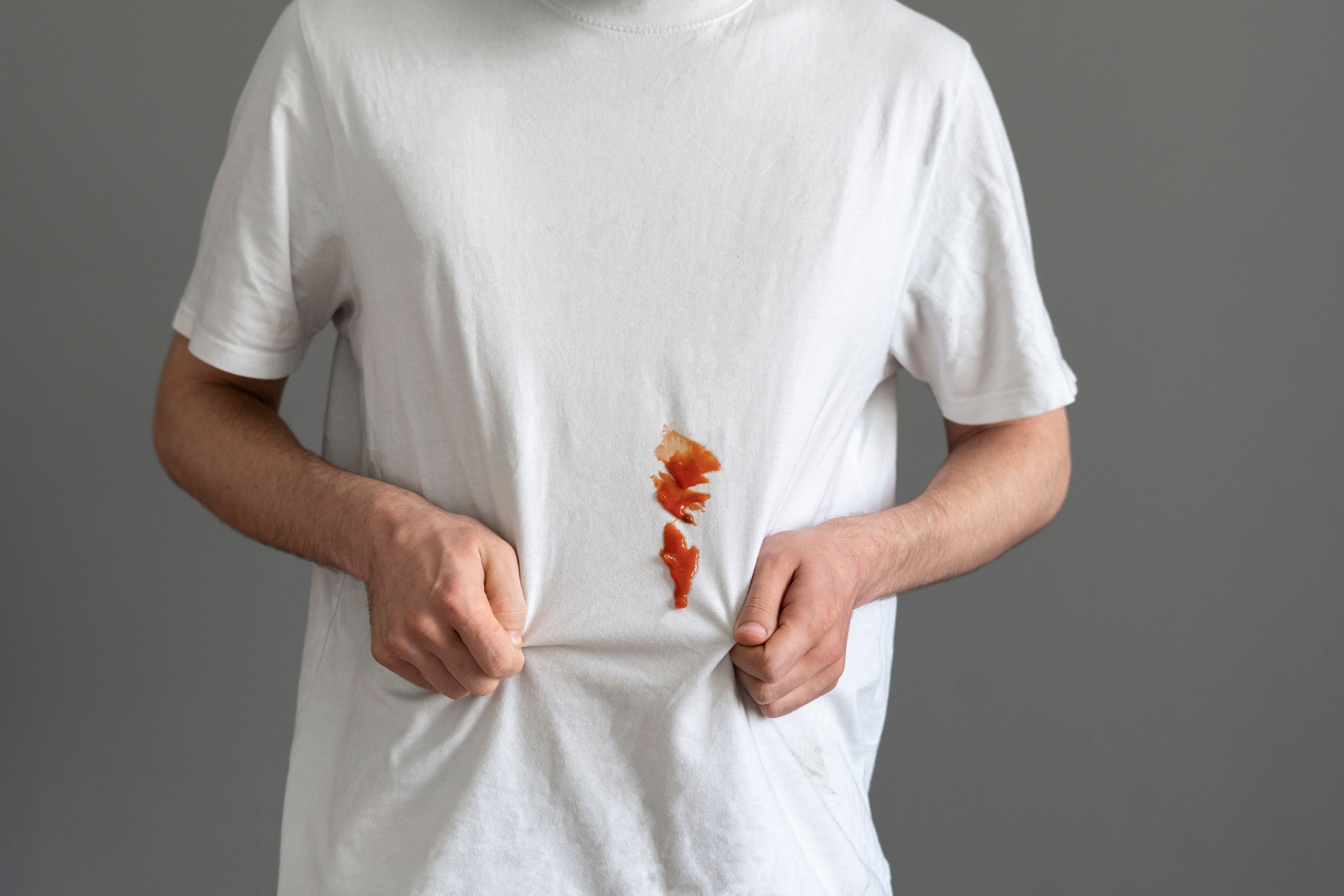
The Best Stain Emergency Solution
We’ve all been there: a splash of red wine at a dinner party leaving wine stains, grease stains from a wrong cooking experiment, chocolate stains, or the dreaded ink leak in a pocket. Stains seem to have a knack for appearing at the most inconvenient moments. For many of these scenarios, traditional laundering might not cut it. That’s when the wonders of dry cleaning come to the rescue, particularly for:
- Delicates: Fabrics like silk, wool, and certain synthetics can lose shape, color, or texture when washed at home. Dry cleaning ensures they remain in impeccable condition.
- Items that shouldn’t get wet: Think about those garments that don’t fare well when soaked or subjected to the rigors of a washing machine. For these, dry cleaning is an obvious choice.
- Garments with set-in stains: If a stain has been sitting on a piece of clothing for a while, the heat from a washing machine or dryer can set it further. Dry cleaning can prevent this and often tackle these stubborn marks more efficiently.
- Clothes with grime or petroleum-based stains: Oil and grease are notoriously challenging to remove with regular laundering. Dry cleaning solvents can break down these compounds, rendering the clothes spotless.
- Items you want to preserve: Wedding dresses, heirlooms, or garments with sentimental value can benefit from the gentle touch of dry cleaning. It ensures longevity and maintains the garment's integrity.
Home dry cleaning kits might seem tempting for those who prefer the convenience of home solutions. However, while these can be suitable for freshening up garments, they often can’t match the stain-removing power of professional dry cleaners.
In a world filled with quick DIY solutions, recognizing when to call in the professionals can save time, money, and, most importantly, your cherished clothing items. So, the next time you face a stain emergency, consider heading straight to Rinse instead of fretting. Explore our comprehensive dry cleaning services, and let us tackle those stains, ensuring your clothes look as good as new. Your wardrobe will thank you!
Contact us at Rinse today to see our skill in action.

Introduction
In the simplest of terms, dry cleaning is a process of cleaning clothes without the use of water. The absence of water in the process is where the name dry cleaning comes from (one mystery solved). Instead, dry cleaning uses non-water-based chemical solvents to clean clothes.
In more complex terms, the dry cleaning process has quite a few steps to it: Inspection and Tagging, Pre-Spotting, the Dry Cleaning Process, Post Spotting, and Finishing Touches.
The 5 Steps of the Dry Cleaning Process
Inspection and Tagging
This is one of the parts that you’re likely most familiar with. You take your garment to the cleaner's, and the dry cleaner creates a tag for your item. This is also when your clothes are examined for any stains, missing buttons, tears, etc.
Pre-spotting
Here is where things begin to get a little hazier for the average dry-cleaning customer. Once we’ve dropped off our garments, cleaners will typically go through a pre-spotting process where they’ll apply a chemical solvent (perchloroethylene), vacuum, or heat to stains on your garment, which helps to remove stains during the actual dry cleaning process.
Dry Cleaning
This is the part we never see. Once your clothes have been pre-spotted, your clothes are placed into a machine and submerged into a non-water-based solvent. The clothes are then rotated in a perforated cylinder where the cleaning solvent is released in a steady amount throughout the entire process. From there, the machine rapidly spins the clothes to get rid of any excess solvent and releases warm air. Your clothes emerge completely dry.
Post-spotting
Here your cleaner will inspect your clothes for any remaining stains and residue and remove them using the same process they did in the pre-spotting stage.
Finishing
Once your clothes have gone through the complete dry cleaning process, they are pressed, steamed, or ironed for presentation. This is the part we love because it makes our clothes look and feel amazing.

When To Dry Clean Your Clothes
There are times and fabrics when dry cleaning is not truly needed and others when it is the only option. Below is a list of occasions for each.
Do dry clean: delicate fabrics (such as silk, suede, leather, wool, cashmere), stains you do not know how to remove, garments that are tough to iron, expensive clothing that you do not want to risk in the washing machine or dryer.
Do not dry clean: fabrics such as cotton, denim, and synthetics. Always consult clothing care labels when unsure about the fabric.
Getting the Best Results from Your Dry Cleaner
Make sure you're getting the best bang for your buck when it comes to dry cleaning. Here are a few tips to achieve that:
-
Check your garment labels (we cannot stress this one enough!)
-
Don't clean your “dry clean only” garments with your at-home detergents – home dry cleaning is just not the same
-
Tell your dry cleaner about any stains so they can be targeted effectively
-
Clothes coming back from the dry cleaner should not smell of solvent (tetrachloroethylene or perchloroethylene). If they do, it might be time to find a different dry cleaner

Try Dry Cleaning for Delicates
Dry Cleaning can be beneficial for garments made from fibers that don’t react well when exposed to water, like silk and wool. It’s also good for garments that shouldn’t be exposed to the heat of a traditional dryer.
While the dry cleaning process is inherently opaque to the average customer since everything happens "behind the scenes," all in all, it’s pretty straightforward once you understand the steps.
You can also try a dry cleaning service that includes pickup and delivery, such as Rinse. We provide quality solutions, while also being environmentally conscious.
Contact us at Rinse today to see our skill in action.

Have laundry or dry cleaning to do?
Rinse picks up, cleans and delivers 7 days a week. Amazingly awesome. Ridiculously simple.

It’s always exciting to add a new piece to your wardrobe but once you’ve worn it, you need to know how to wash it. Is it a “Hand Wash” or “Dry Clean Only” item? Does it lay flat or hang to dry? Different fabrics require different types of treatment.
Clothing labels are the first point of reference when it comes to clothing care – the little tag on your favorite sweater provides helpful washing instructions to ensure your cherished item gets the proper care it needs. Let's have a look at a few common fabrics that should be dry-cleaned professionally and which ones you can take care of in your laundry room.
Fabrics That Need Professional Cleaning
Silk
Silk is a delicate and luxurious fabric that requires special care to maintain its structure and appearance. Dry cleaning ensures that its texture, color, and shape are not distorted. Hand washing is sometimes an option, but the best way to keep your silk garments in top condition is by taking them to your dry cleaner.
Velvet
Similar to silk, velvet is also an upscale fabric that falls under the delicate category. In particular, it is sensitive to water and moisture. Wet cleaning can lead to shrinkage or spots that are hard to remove. Avoid risking your garment and preserve its beauty – take it to the dry cleaner.
Wool
Wool is a natural and special fabric that should either be washed by hand or taken to the dry cleaner. Avoid putting your favorite sweater in the washing machine to prevent any unwanted surprises.
Leather
If you've finally scooped up that vintage leather jacket you've been eyeing all season, you'll want to make sure it lasts. For a quick fix to take care of any stains, start by scraping off the residue, but make sure to keep it away from water, which can damage the material. After that, trust it to an experienced dry cleaner for long-term maintenance.
Other Fabrics
Besides silk and leather, other upscale fabrics – including chiffon, linen, rayon, and suede – should be brought to a professional cleaning service to preserve their natural luster and form. You'll also want to entrust suits and most professional wear to the care of a professional.
Fabrics That Can Be Washed at Home
Cotton
Cotton is a versatile and durable natural fabric that can be washed in warm or cool water with regular detergent. Just because an item can be machine-washed doesn't mean that you should subject it to a hot soak – heat can cause colors to fade. If you are not washing with cold water, separate your garments by color to avoid bleeding.
Knits
Knit garments are usually made of natural fibers like cotton or wool. As such, follow the instructions on the care label to ensure proper care to avoid stretching, pilling, and distortion. In addition, make sure the detergent you use is suitable for delicates – do not use bleach.
Polyester and Other Synthetics
Synthetic fabrics such as polyester and nylon are safe to wash in a machine using warm water on either the delicate or permanent press cycle, but take care when drying these items to avoid permanent wrinkling. Using a mesh bag is also a good idea.
More luxurious pieces such as cashmere blends should always be washed by hand in cold or lukewarm water with gentle laundry soap. Don't wring the fabric as it may ruin the material. Instead, take care to dry flat on a drying rack or use a drying mesh rack to help the clothing keep its shape. If you're pressed for time, place the item in a laundry bag and select the most delicate cycle on your machine to mimic the hand wash process when laundering at home.
If you're ever unsure about your clothes, check the label. Our handy clothing label guide breaks down common symbols and instructions so you can avoid any laundry mishaps.
Or if care label instructions have you feeling overwhelmed, you can leave the cleaning to Rinse. We offer Wash & Fold, Dry Cleaning, and Hang Dry to ensure your clothes are taken care of appropriately. Sign up for free and schedule your first pickup at your earliest convenience.
Can Hand Wash Items Be Dry Cleaned?
Yes, but it depends on the fabric. Dry cleaning-friendly materials like linen, cashmere, and silk can be taken to dry clean, but always bring it to the attention of the cleaner. Chemicals such as perchloroethylene (perc) or tetrachloroethylene are not always ideal for garments with a "hand wash only" tag.
You might also be wondering if you can do home dry cleaning instead of going out and paying for the service. The short answer is yes but be warned that different fabrics have different care requirements. There are special cleaning kits that you can purchase, typically containing solvents, cleaning solutions, and stain removers along with instructions on how to use the kit. Follow the steps carefully, place your clothes in the reusable bag provided, and run your dryer as directed by the kit. Remember to air your clothes afterward.
The Real Deal About At-Home Denim Care
Contrary to popular belief, denim isn’t the sort of fabric you can put through the ringer – or in this case, the dryer. Despite being a very durable material, proper jean care is quite particular. Most jeans should be washed inside-out in cold water and hung to dry, although some high-end denim would even benefit from a dry clean. And when it comes to raw denim, which means denim in its purest, non-distressed form, the best washing practice is not to wash at all. If you find yourself with a stain, simply wipe it away with a damp cloth, or take it to the experts for extra help.

Caring for Special Items

There are certain pieces in your closet that require special attention like that suede fringed dress or straw sun hat. Use a damp cloth to wipe away dirt, dust, or sweat stains from your hats, and be sure to keep them in a cool, dry spot rather than out in the sun to avoid color damage. The embellishments on that dress can make it extra difficult to care for. Most sensitive details like fringes and sequins require hand washing in a gentle detergent, while embroidered pieces should be machine washed inside-out and placed in a mesh laundry bag on the delicate cycle.
When in doubt, visit your trusted dry cleaner for proper care of any attire. Most modern services offer a full menu of options to suit all your clothing care needs, but if your neighborhood cleaner doesn't have the resources in-house, they'll likely know about a great specialty cleaning service in town and can outsource your item to ensure it's well-treated.
Photos: Irene Lasus, Matthew Wiebe, Kasia Serbin, Eranicle, Alex Blăjan

Think of your favorite coat or jacket. Now, try to think about the last time you had it cleaned. It’s easy to forget to care for outerwear as the seasons change and your wardrobe staples rotate, but just like your trusty pair of blue jeans, your coats and jackets need regular care to keep looking good.
We’ve outlined basic guidelines to help you decide when to clean your outerwear, so you can give these pieces top-notch treatment.
Consider the fabric

The fabric of your coat or jacket is one of the key factors in deciding how frequently it needs to be cleaned.
-
Down jackets, leather jackets, and wool coats: Once a season, if worn sporadically; twice a season, if worn regularly.
-
Suit jackets and blazers: After four to five wears.
-
Fleece jackets: After six or seven wears.
-
Rain jackets: Once a month, if worn infrequently; twice a month, if worn regularly. You should also use a durable water-repellent finish to ensure the jacket’s waterproof coating is doing its job.
Offseason Care of Your Winter Coats
To prolong the life of your coat or jacket, don’t forget to tend to your outerwear during the offseason. Before storing it at the end of the season, make sure your jacket is clean – even if you don’t see any visible traces of dirt or stains. Moths are attracted to perfume and food odors, so if your coat or jacket isn’t freshly cleaned, it can end up with pesky moth holes.
While many coats and jackets can be hand-washed or machine-washed, dry cleaning is ideal for wool coats or ones with embellishments.
Keep in mind that leather jackets require special care; leather can’t be exposed to water, so bringing it to a specialty cleaner will ensure your jacket gets professional treatment.
Pro-tip: Let the clothing care experts at Rinse take care of your coats and jackets and we’ll make sure they are returned cleaned and ready to wear. We offer Wash & Fold and Dry Cleaning – no matter what type of coat you have we’re able to take care of it. Schedule a pickup today.
Storage considerations

Clean outerwear and appropriate storage go hand in hand. To ensure your outerwear is in excellent condition for the following season, you want to make sure everything is taken out of your coat or jacket pockets. Besides that, check that the zippers are zipped, buttons are buttoned and snaps are snapped. This will help your coat or jacket maintain its original shape.
When it comes to storage, your outerwear, especially a leather jacket or down jacket, needs to be given room to breathe. This means you shouldn’t store your coats or jackets in plastic garment bags but rather in fabric storage bags. Plastic bins are also acceptable, but only if you don’t store too many coats and jackets in one bin.
By following these cleaning and storage guidelines, you can continue to wear your coats or jackets in the years to come. After all, they keep you warm and cozy through cooler weather, so they deserve a little TLC in return.
6 Tips for Cleaning Winter Wear
There are several additional precautions and practices you can take to ensure your winter coats are maintained in top condition. Here are some suggestions:
-
Ensure you check the care tag when deciding whether to dry clean or toss in the washing machine
-
If you are cleaning your winter jacket at home, pretreat stains and soiled spots with an appropriate stain remover before washing the garment
-
Fasten all zippers and buttons to prevent snags and tears
-
Run the washing machine on an appropriate cycle – some fabrics can only handle delicate or gentle cycles
-
Consider the detergent you are using – there are also natural and sustainable detergents that may be better for certain fabrics
-
Again, check the care tag, but it is always safer to skip the dryer and hang dry your clothes when possible. If you are using the dryer, consider using dryer balls
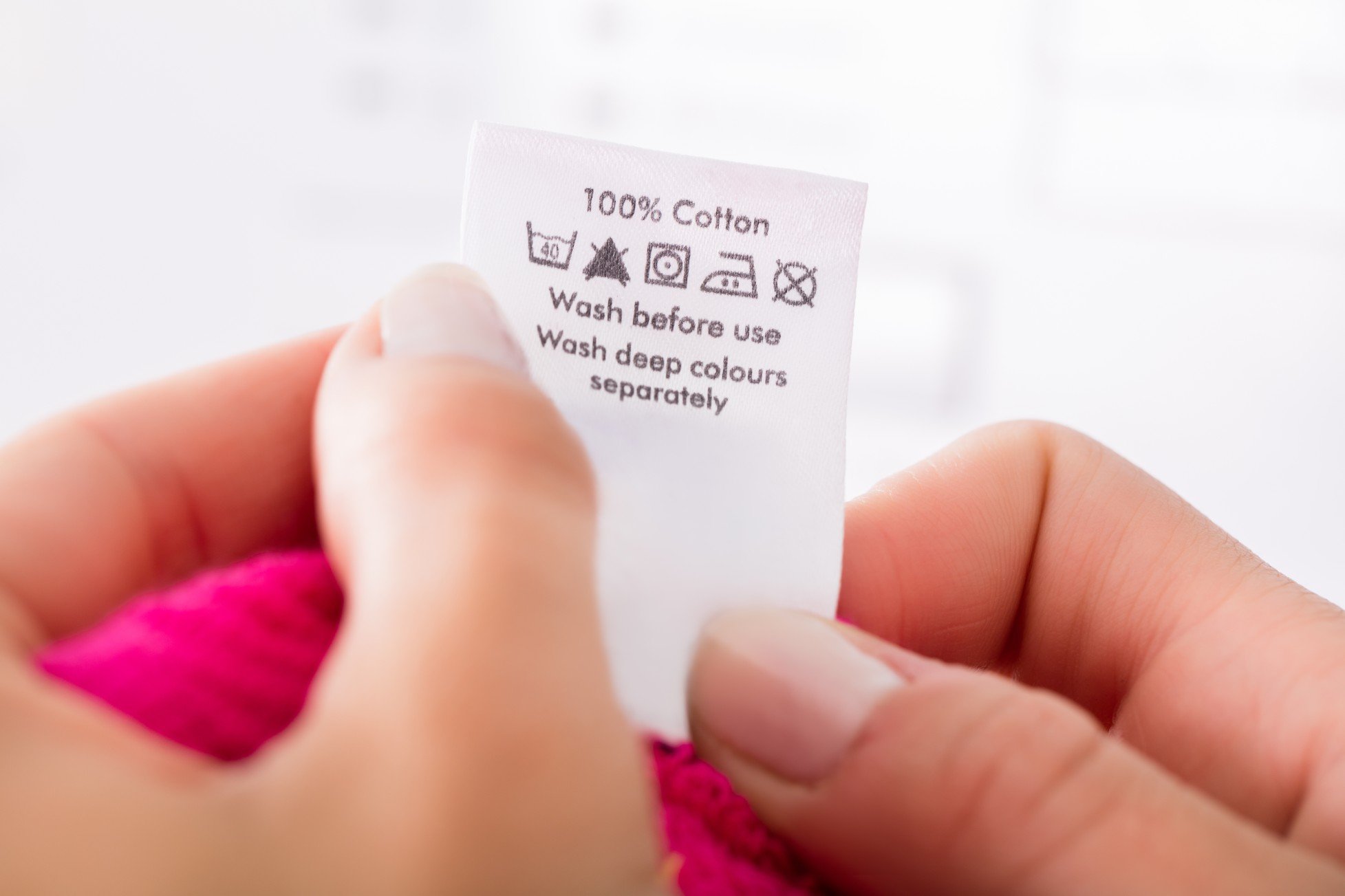
Winter Wear Care with Rinse
If you don't have time or don't want to risk damaging your favorite clothes, consider using a laundry and dry cleaner service such as Rinse. Our expertise in handling winter wear will ensure your jacket is cleaned with the highest care.
We offer pickup and delivery services for all your laundry and dry cleaning needs, any day of the week – you do not even need to be home. Rinse users claim that we save them three hours per laundry load, time you can use to enjoy the season instead of worrying about your clothes!
Contact us at Rinse today to see our skill in action.
Topics
Rinse Drop
We offer pickup and delivery if you can’t be present between 8pm and 10pm.
Our Valet will pick up or deliver your order to your doorstep or concierge, at which point you’ll receive a text with a photo showing where your items were left.
You can enable Rinse Drop on any (or all) of your orders.



